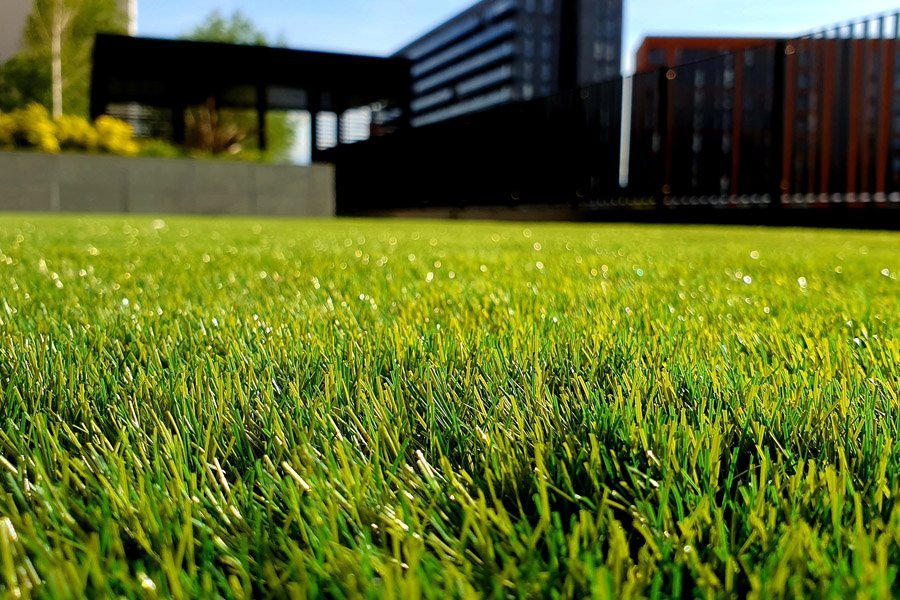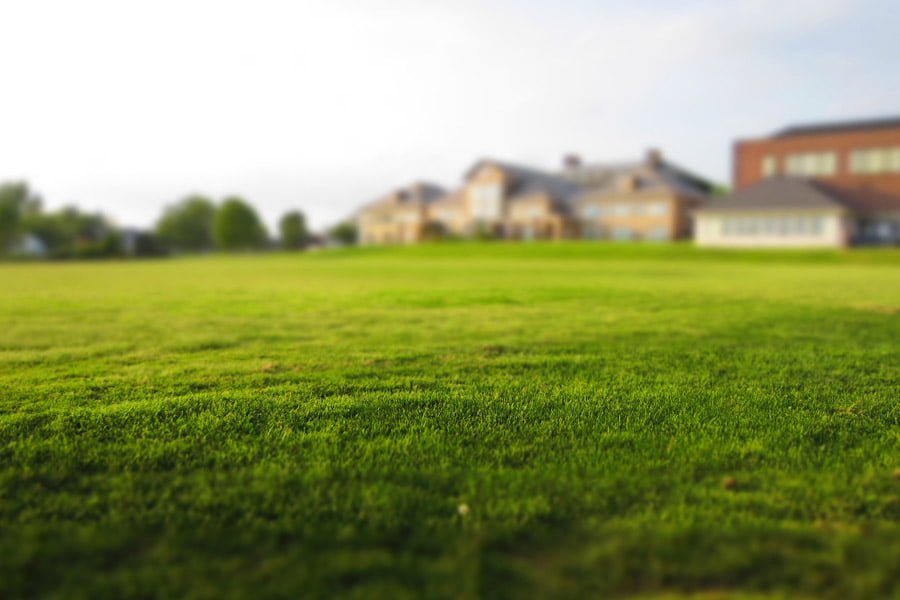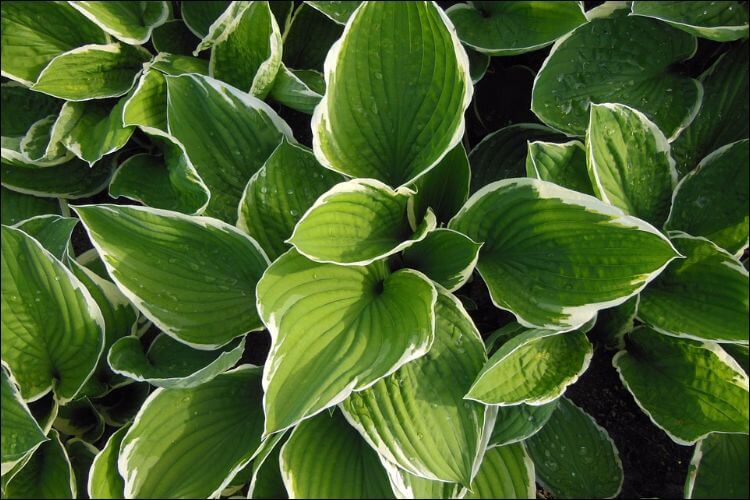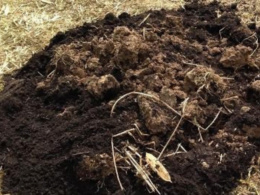Everyone says succulents are the easiest plant to grow. Well, I almost killed mine within a week. That’s when I learned that questions such as, “When is the best time to plant grass seed?” — or in my case, “How can I avoid messing up the easiest thing ever” — are more complex than they appear.
Depending on your type of grass, it will do best planted in late spring or late summer. Some grass grows best in summer and some in fall.
Therefore, half the battle is determining when your grass will grow best. After you figure that out, you’ll want to know what other factors promote healthy seed growth.
Figuring out When Is the Best Time to Plant Grass Seed
Via Pixabay
To answer the question, “When is the best time to plant grass seed?” you need to know the ins and outs of germination. Germination is the process where a seed grows its roots and sprouts up. When planting grass seed, your main focus is to facilitate healthy germination.
You have to persuade your blades of grass to come out of their seeds. They’re cozy in their little shells, and so you need to convince them that it’s nice out. They’re scared if they come out of their shell, they’ll dry up and die — and who can blame them? Without proper care, that’s exactly what will happen.
To encourage germination, you need to give your seeds the best possible chance of growing into healthy adult grass. That’s why there are certain periods in the year that seeds will grow best. Certain periods in the year have the perfect temperature and amount of rainfall to encourage seed germination.
Cold Season Grass vs. Warm Season Grass
Via Pixabay
Figuring out when is the best time to plant grass seed depends on the two main types of grasses: cold season grass and warm season grass.
Like it sounds, cold season grass does better in cold climates and warm season grass does best in warm climates.
So if you live somewhere such as Michigan, cold season grasses will suit you best. If you live more south, like in Oklahoma, you’ll find more success with warm season grass.
When looking deeper into the question, “When is the best time to plant grass seed?” there are a few guidelines to go by.
For example, you don’t want to merely plant a cold season grass when it’s cold. There are still certain times of year that cold and warm season grasses germinate best.
The best time to plant cold season grass
Cold season grass can’t handle the scorching heat of summer. On the other hand, they also can’t handle the freezing frost of late fall.
Accordingly, you can deduce there are two periods where you could plant cold season grass: fall or spring.
Late summer to early fall is the ideal time to plant cold season grass. You see, cold season grass thrives in air temperatures of 60 degrees Fahrenheit to 75 degrees Fahrenheit. The reason fall is so great is that when summer winds down, the soil will stay warm while the air will be moderate to cool.
During the spring, there’s still a chance the soil will stay soggy and wet from snowmelt and April showers. Therefore, your best bet is to plant your cold season grass around 45 days before the first frost of fall.
When should you plant warm season grass
Being the opposite of cold season grass, you can assume warm season grass will thrive in the heat.
That’s why late spring to early summer is the best time to plant warm season grass. You allow your seeds to germinate and grow into adulthood before the cold snaps of fall come around.
Warm season grass thrives in air temperatures around 80 degrees Fahrenheit. However, planting these seeds during late spring allows you to make use of spring showers.
To find the right balance, wait until there’s no longer a risk of frost from spring. Then once temperatures start rising near 80 degrees Fahrenheit, plant your seeds.
Planting the right seeds
Knowing which time certain grasses grow best doesn’t matter if you don’t know what type of grass to plant. As a rule of thumb, there are four general climates in the U.S. depending on the heat and humidity.
The first climate is cool and humid. The best grasses to plant in these climates are bluegrass and fescue, which are both cool weather grasses. States in the Northeastern U.S. such as New York tend to have this climate.
Cool and arid climates also do well with cool weather grasses such as bluegrass and fescue. States with this climate tend to fall in the upper midwest, such as Montana and Idaho. If you don’t have an option to water your grass well, buffalograss is a drought-resistant alternative.
In warm and arid climates, the warm weather grass buffalograss will do well. This climate encompasses states in the southern U.S. such as Texas and New Mexico.
Finally, if you live in a warm and humid climate such as Florida, you’ll do well with bermudagrass.
Setting Your Grass up for Success
Via Pixabay
Now that you know the answer to the question, “When is the best time to plant grass seed?” you’re just about all set.
But before you go, make sure you know how to properly take care of your seeds, so they grow into a lush lawn.
If you get carried away thinking the timing’s the only factor in seed growth, you’ll be in for a rude awakening.
Tucking them in
Before even planting your seeds, you want to prep their soil. Some factors that promote a healthy lawn are a proper level, pH (acidity), fertilization, and aeration.
Make sure to till and level your lawn. The perfect gradient will be a one to two percent decline away from any buildings. You want to make sure your lawn in level so that there aren’t any dips or holes.
This point is a good time to add fertilizer and compost as well, which both will provide the proper nutrients and aeration for your soil. You can also use an aerator to help promote drainage and aeration in your soil.
An ideal pH for your soil will be between 6.0 and 7.5. Your county’s extension office may be able to test your soil’s acidity for you. If your soil’s pH is too high (too alkaline), you can add sulfur. If the pH is too low (acidic), you can add lime.
By prepping your soil, you further set up the proper conditions to cultivate a thick and green lawn.
Properly watering your seeds
Timing settles the issue of proper temperatures for germination, but watering is just as necessary. There’s a delicate balance between too little and too much water. The key is to keep your soil moist, but not flooded.
No matter what, you don’t want your seeds to dry out while germinating. That will lead to a patchy lawn because your seeds will start dying on you. Instead, you want to make sure your seeds are always in a moist environment.
To do this, water your seeds twice a day: once in the morning and once at noon, which will keep your seeds from drying out as they germinate.
To determine the right balance of water, you basically want to make sure the soil your seeds are in is always moist. The thing is, you don’t want to see puddles in your lawn. If you mindlessly hose down your yard you run the risk of displacing your seeds.
Watering your lawn too much can also disturb the soil your seeds are bedded in. You don’t want to wash away your soil and seeds. Soppy soil also promotes disease and pests. That’s why the key term is moist, not wet.
When to treat them as grown-ups?
There is a point where you can stop treating your seedlings as delicate babies.
Once most of your seeds have sprouted, wait one more week, and then you can water your lawn once a day. Then, once all of your grass reaches three inches tall, you’re safe to start mowing your lawn.
Time to Take Action
Via Pixabay
You no longer have to ask, “When is the best time to plant grass seed?”
You’ve found your answer, and you also know how to set your seeds up for success when the time comes. With that out of the way, it’s now up to you to take action.
Equipped with the proper knowledge, it’s now time for you to grow your green thumb. Nothing’s more satisfying than watching a lifeless, brown lawn turn into a vibrant and flourishing turf.
Whether it’s for your kids, pets, or aesthetics, you’re ready to create the lawn of your dreams!
Do you have other ways of knowing when is the best time to plant grass seed? Share your tips and tricks in the comments!
Featured Image Source: Unsplash












